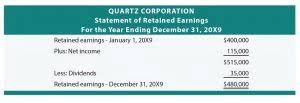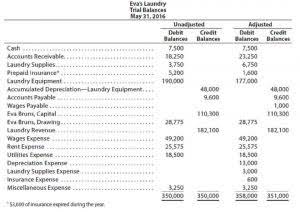
A negative balance is mostly seen in a checking account when a business has a negative balance. The negative balance occurs due to issuing checks for significant amounts of cash, that exceed the amount in the checking account. Retained earnings refer to the profits earned by a company, minus the dividends it paid to the shareholders. Basically, they act as the part of the cumulative profit that is held or retained for future use.
Why might you have never met the opening balance equity account before?

So a good rule of thumb is closing out the what is opening balance account in QuickBooks and transferring the balance to the appropriate equity accounts, ensuring that your accounting records are accurate and up-to-date. After creating the journal entry to transfer the balance in the opening balance equity account to the appropriate equity accounts, the opening balance equity account should have a zero balance, meaning that you’re good. Opening balance equity is an equity account (as you can see by the name). As soon as you start setting your asset accounts with opening balances in the chart of accounts, QuickBooks will put the equal balance amounts to this account to offset them and, this way, balance the equation. Adding opening balances to your liability and equity account should, ideally, put the OBE’s balance to zero. When you create a new account in QuickBooks Desktop, pick a day to start tracking all of your transactions.
Common Errors to Avoid
Failure to close out this account might result in a balance statement that looks unprofessional and possibly indicate an incorrect journal entry in your QuickBooks accounting records. Opening balance equity is a term used in accounting to describe the initial balance of equity in a business at the start of a new accounting period. This balance is usually created when a new company is formed or when a company changes its legal structure. In other words, it represents the difference between a company’s assets and liabilities at the beginning of a new accounting period.
You create a company file in QuickBooks for the first time
Recording an initial inventory quantity is essentially the same as recording an opening balance in the inventory account and creates the problem discussed in the two earlier sections. There are several reasons why you have an Opening Balance Equity account. However, that doesn’t immediately mean you committed a mistake in using QuickBooks—it’s just how the system works.
To fix this issue, the bookkeeper should review the data entry process and make sure that all accounts are entered correctly. Accounts Receivable is the amount of money owed to a business by its customers. When setting up a new company file, QuickBooks will prompt users to enter the opening balances for each customer account. When setting up a new bank account in QuickBooks, users will be prompted to enter the opening balance. This is the amount of money in the account at the start of the fiscal year. QuickBooks will automatically create an entry in the Opening Balance Equity account to balance the books.

- That is why an accountant should make sure that the bank reconciliation is adjusted to zero before the completion of the period.
- So, upon completing the setup, you might want to allocate this balance to the appropriate accounts, such as inventory assets or equity accounts.
- To fix this issue, the bookkeeper should review the general ledger and make sure that all prior account balances are accurate.
- Opening balance equity is necessary to make sure that the accounting equation is balanced and that a company’s financial records are accurate, as was already indicated.
- These transactions could include the initial investment made by the owners, any loans taken out, or any profits or losses generated during the period.
During the audit, the focus is on validating the existence of assets and liabilities that contribute to the Opening Balance Equity. Auditors assess the valuation and completeness of these records, ensuring that the equity balance is reflective of the company’s true financial state at the point of transition. They also evaluate the company’s internal controls surrounding the recording and adjustment of Opening Balance Equity to determine the risk of material misstatement. I tried to do my research but I am still having a hard time understanding the function of Opening Balance Equity.
How to bring an opening balance equity account to zero?
This way, even if you begin a period with negative equity, it will be increased if the business is doing well. Opening balance equity helps offset the opening balance transactions, providing the correct start for a balance sheet and the financial records in the long run. If the amount of the journal accounting entry does not support the amount on your bank statement and you close it out, the software will rearrange the opening balance equity account balance.
Free QuickBooks Tutorials: Learn QuickBooks Fast (+Videos)
You might want to automate your accounting to eliminate errors, have your transactions categorized correctly and funds allocated properly. Book your seat at our Weekly Public Demo to see how you can do it with Synder, or explore it yourself with a 15-day all-inclusive free trial. But imagine you creating a company file in QuickBooks, and it pops up seemingly out of nowhere, showing some balance on it. No need to worry because QuickBooks creates it automatically as you start setting your accounts and inserting your opening balances there. If there’s a left-over balance in the Opening Equity account, it should go to other equity accounts or retained earnings.
- It is one of several default accounts in the owner’s equity section of the balance sheet and should always be zero since you need to avoid making one-sided journal entries.
- To adjust the opening balance of the bank account, the balance of this account will now be temporarily set to $100.
- It is the responsibility of the financial professional to ensure these adjustments are made in accordance with the applicable accounting framework and that they are supported by adequate documentation.
- OBD is only added to once, on that beginning date, or if you forgot about an asset but you still use the same initial date.
- Always make sure to account for uncleared bank checks and other factors.